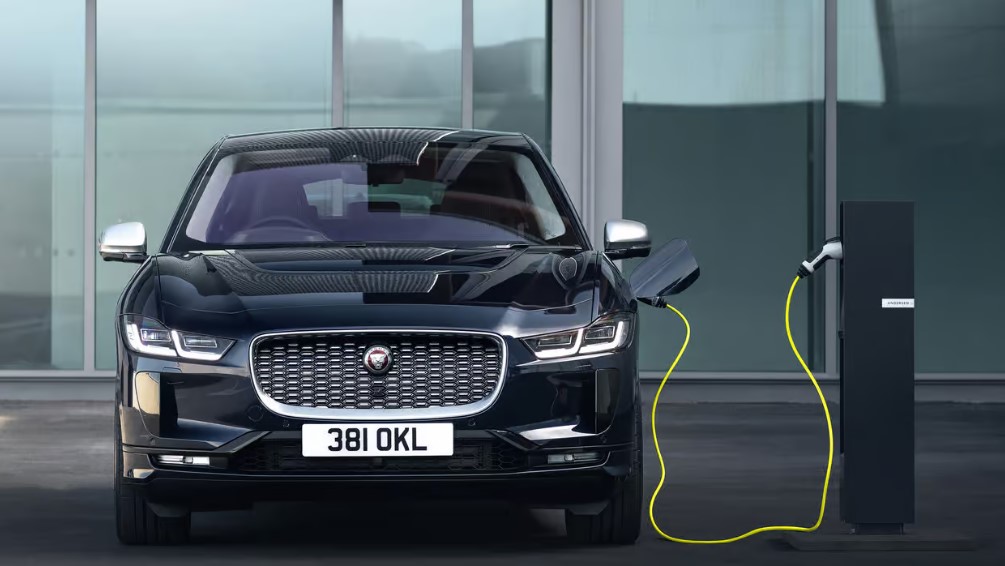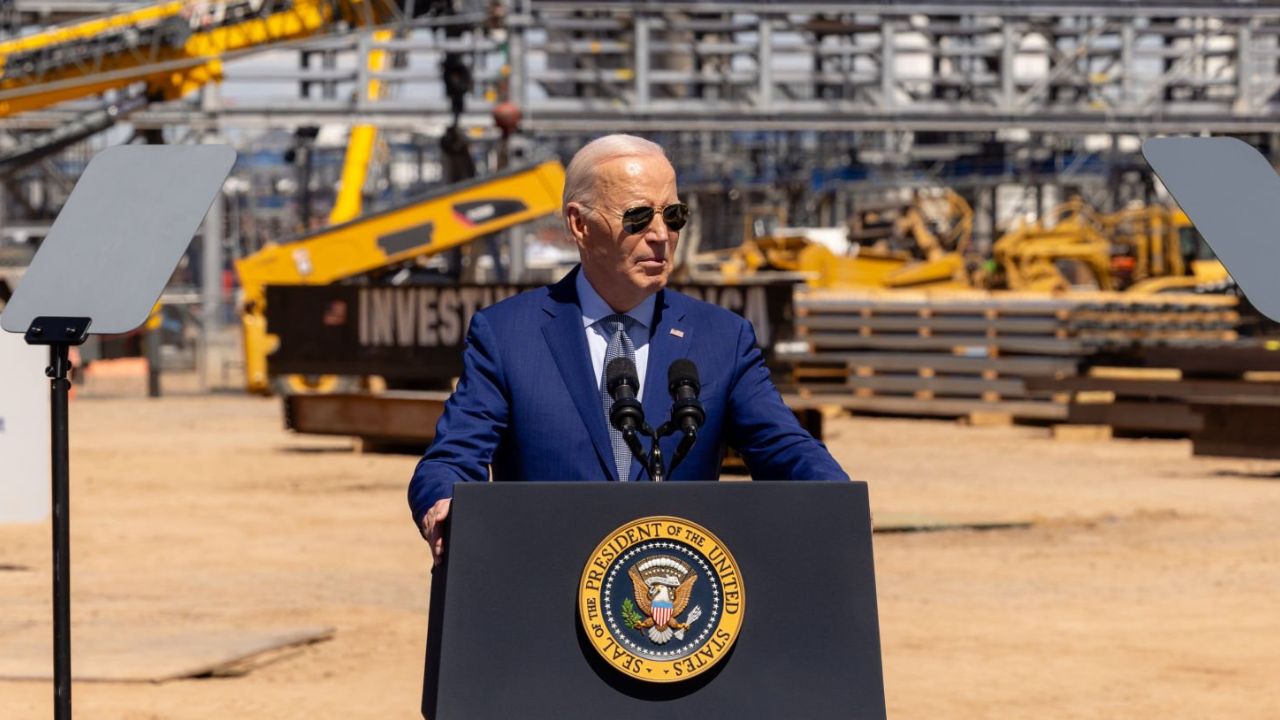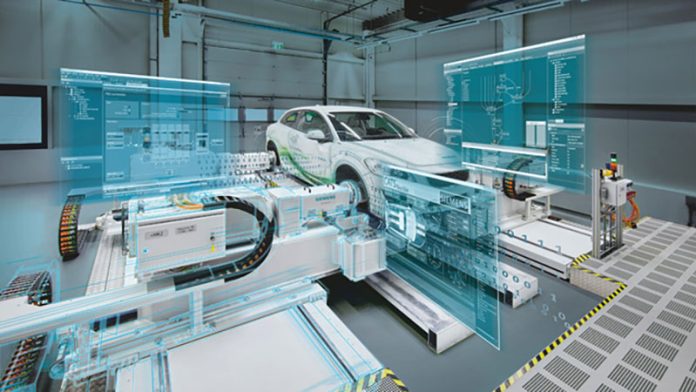The Biden administration’s recent decision to adjust its timeline for the widespread adoption of all-electric vehicles (EVs) and provide automakers with additional avenues to comply with the new tailpipe emissions standards is anticipated to benefit traditional automakers.
In the latest regulations disclosed by the Environmental Protection Agency (EPA) on Wednesday, the goal is to reduce tailpipe emissions by 49% between model years 2027 and 2032. By 2032, the EPA has established a target for EVs to constitute at least 35% of all new vehicle sales.
These standards represent a departure from the more ambitious proposals put forth last year, which aimed for a 56% reduction in emissions by 2032 and envisioned EVs capturing 67% of the market share for new vehicles by that time.
The adjustment in expectations for EV adoption comes against the backdrop of slower-than-anticipated sales of these vehicles. Factors such as their higher price tags compared to traditional gasoline-powered counterparts have contributed to this sluggish uptake.
However, the EPA’s latest approach to curbing tailpipe emissions does not solely rely on the proliferation of EVs. Instead, it takes into consideration the potential contributions of more fuel-efficient gasoline engines, hybrid vehicles, and plug-in hybrid electric vehicles (PHEVs).
The EPA’s outlined percentage targets for EV adoption serve as benchmarks rather than strict mandates, offering guidance on how automakers could align with the emissions regulations. The envisioned range for the proportion of EV sales in the market by 2032 spans from 35% to 56%.
According to the EPA, adhering to these standards will result in the avoidance of over 7 billion tons of carbon emissions and yield nearly $100 billion in annual net benefits to society. Among these benefits are estimated to be $13 billion in annual public health improvements attributed to enhanced air quality, as well as $62 billion in reduced annual fuel expenses and savings on maintenance and repair costs for drivers.
Here are some key insights into what the new guidelines signify for automakers, investors, and the environment.
A Victory for Detroit
Automotive officials and Wall Street analysts are celebrating the revised regulations as a significant triumph for legacy automakers, particularly the traditional Detroit giants General Motors, Ford Motor, and Chrysler parent Stellantis. These companies predominantly derive their profits from large SUVs and trucks.

“We view this development as positive for traditional US automakers, since the new rules put less pressure on them to ramp up EV production in the near term, and could even potentially enable them to reduce further EV capex and R&D,” remarked Deutsche Bank analyst Emmanuel Rosner in an investor note issued Thursday.
John Bozzella, who serves as the president and CEO of the Alliance for Automotive Innovation, a lobbying organization representing the majority of automakers in the United States, concurred with the sentiments.
“Making adjustments to the pace of EV adoption in the years 2027 through 2030 was a prudent decision because it prioritizes more attainable electrification objectives during these critical upcoming years of the EV transition,” he remarked.
The newly introduced regulations also signal a triumph for the Detroit-based United Auto Workers union, which has expressed concerns regarding the potential impact of the shift from internal combustion engines to EVs on employment.
“By taking seriously the concerns of workers and communities, the EPA has created a more feasible emissions rule that protects workers building [internal combustion engine] vehicles, while providing a path forward for automakers to implement the full range of automotive technologies to reduce emissions,” stated the UAW in a released statement.
Stocks of Detroit automakers, as well as other industry players like the leading U.S. hybrid manufacturer Toyota Motor, experienced gains on Wednesday following the announcement.
Tesla, Certain Environmental Organizations Express Discontent
While the revised standards brought a sense of relief to Detroit, not everyone welcomed the news.

According to Chelsea Hodgkins, a senior policy advocate at the left-leaning consumer rights group Public Citizen, the new rule “falls far short of what is needed to protect public health and our planet. EPA is giving automakers a pass to continue producing polluting vehicles,”
Martin Viecha, the vice president of investor relations for Tesla, the largest U.S. EV manufacturer, echoed similar sentiments in a post on X: “Unfortunately, people use plug-in hybrids mainly as gas cars, which means their CO2 emissions are far worse than official EPA or WLTP ratings suggest.”
“Just like officially rated energy consumption of EVs has been getting closer and closer to reality, same should be done for plug-in hybrids,” he added.
The Sierra Club, an environmental organization that has previously criticized automakers like Toyota for their dependence on hybrids, departed from its previous stance and praised the standards. Despite its past criticism, the organization, which endorsed President Joe Biden for reelection, hailed the new rules as “one of the most significant actions his administration can take on climate change.”
Political Ramifications
Numerous experts and analysts on Wall Street were prompt to highlight the potential political advantages the new standards might offer President Biden in his reelection campaign.

“We surmise this slight leniency appeases to lobbying on behalf of automakers — or more pointedly, the auto unions — which have understandably viewed the aggressive efforts (e.g., the IRA bill turned law) by the Biden administration to ‘electrify’ the auto industry as a threat to their jobs in conventional auto manufacturing plants,” remarked Loop Capital analyst Chris Kapsch in an investor note.
Adam Jonas, an analyst at Morgan Stanley, echoed similar sentiments in a separate note: “The delay and flexibility baked into the new timeline could be part of an effort to appease the UAW, a key Democratic constituency historically concerned about the rise of EVs.”
This move might bolster the president’s standing with the UAW, which endorsed Biden for reelection in January. Also, it could be construed as an effort to strengthen his position in Michigan—home to GM, Ford, and numerous other suppliers—where the state’s role as a swing state is anticipated to be pivotal in the upcoming presidential election.
The Saga Continues
The tailpipe emissions regulations represent just one facet of the federal government’s efforts to enhance vehicle efficiency.
Automakers are still awaiting the “Corporate Average Fuel Economy,” or CAFE, standards from the National Highway Traffic Safety Administration (NHTSA), a division of the Department of Transportation, for model years 2027 to 2032.
CAFE standards dictate the distance vehicles must travel on a gallon of fuel. In 2023, NHTSA proposed an industry-wide fleet average of around 58 miles per gallon for passenger cars and light trucks in the 2032 model year, achieved by annual increases of 2% for passenger cars and 4% for light trucks.
The finalization of the CAFE standards is anticipated later this year.
Additionally, there’s the California Air Resources Board (CARB), which retains the authority to establish its regulations for emissions and fuel economy—a jurisdiction that former President Donald Trump sought to curtail.
For years, automakers like GM have advocated for a unified national standard for fuel economy and greenhouse gas emissions, arguing that it would streamline planning and compliance efforts.
“While we review the details, we encourage continued coordination across the U.S. federal government and with the California Air Resources Board to ensure the auto industry can successfully transition to electrification,” remarked GM in a statement.


